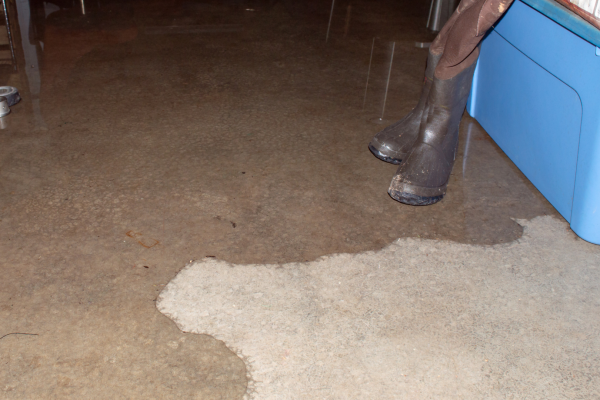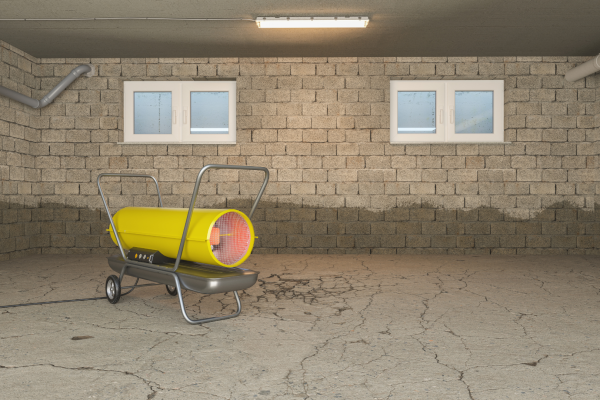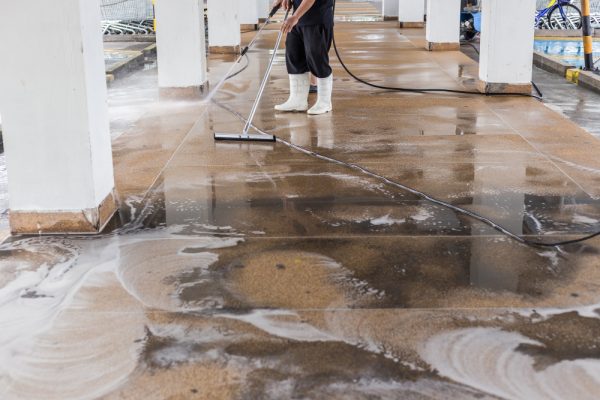The Importance of Professional Flood Damage Repair
Floods can be devastating, and the damage they cause can be overwhelming. From waterlogged belongings to structural damage, flood damage repair is a complex process that requires specialized knowledge and expertise. In this comprehensive guide, we will cover everything you need to know about flood damage repair. We will begin by understanding what flood damage is and what causes it. We will then provide immediate steps you should take after a flood, such as contacting your insurance provider and documenting the damage. The post-flood process of flood damage repair involves inspection and assessment, water extraction and drying, cleaning and sanitizing, mold concerns, restoring your home, among other things. Finally, we will answer some common questions about flood damage repair like how long it takes for flood damage to show and whether all flood damage can be repaired.
Understanding Flood Damage
Flood damage can result in serious repercussions such as structural damage, mold growth, and potential hazards. Assessing the extent of water damage is crucial to determine the severity of the situation. Failure to address the spread of mold spores promptly can further harm your property. Taking immediate action is vital for mitigating water damage and preventing further deterioration. Proper cleanup and restoration are essential for the full recovery of your home or property.
Defining Flood Damage
Flood damage refers to the detrimental effects caused by an excess amount of water infiltrating your property. This can transpire due to natural calamities, plumbing malfunctions, or sewer backups. Indicators of flood damage include stagnant water, dampness, and high humidity levels. It can impact various areas such as drywall, flooring, appliances, and personal belongings. In order to address flood damage, professional assistance and water damage restoration services are often required.
Causes of Flood Damage
Causes of flood damage can vary significantly. Natural disasters like heavy rain, hurricanes, and storms are common culprits. Burst pipes, plumbing issues, and sewage backups can also lead to flood damage. Additionally, poor property drainage, sump pump failure, or water heater leaks can contribute to the accumulation of water and subsequent damage. It’s important for property owners to understand the sources of water damage in order to prevent future occurrences.

Immediate Steps to Take After a Flood
After a flood, it’s crucial to prioritize safety by turning off electrical sources and wearing protective gear. Contact emergency services such as electricians, plumbers, and restoration professionals to address immediate concerns. Document the damage by taking photos and creating a detailed inventory of affected areas. Notify your insurance company to initiate the flood damage insurance claim process. Begin water extraction, drying, and cleanup to prevent further damage and mold growth.
Safety Precautions Post-Flood
After a flood event, it is crucial to prioritize safety and take necessary precautions. Be mindful of potential hazards that may arise, such as structural damage, standing water, and contaminants. Avoid contact with flood water, especially black water, as it may contain sewage or chemicals. To minimize mold and mildew growth, ensure proper ventilation and utilize dehumidifiers. Seek professional assistance for water damage repair services, and always adhere to local health and safety guidelines during the cleanup process.
Contacting Your Insurance Provider
When it comes to dealing with flood damage, one of the crucial steps is contacting your insurance provider. Notify your insurance company as soon as possible to report the damage caused by the water event. You should also take the time to familiarize yourself with your homeowners insurance policy, understanding its coverage and deductibles. Follow the instructions provided by your insurance company regarding documentation and the claims process. Keep records of all communication, including claim numbers, adjuster information, and receipts. It is important to understand the scope of your flood insurance coverage, including any limitations and exclusions. By taking these steps, you can ensure a smoother and more efficient claims process.
Documenting the Damage
To streamline the insurance claims process after flood damage, it’s crucial to document the extent of the damage thoroughly. Take detailed photographs of affected areas, belongings, and structural damage. Create a comprehensive inventory of damaged items, including their value, age, and description. Keep copies of repair estimates, invoices, and receipts related to flood damage repair. Additionally, maintain a record of any additional expenses incurred, such as temporary accommodations. Clear and organized documentation will prove invaluable in navigating the claims process efficiently.

The Process of Flood Damage Repair
The process of flood damage repair starts with a thorough inspection and assessment of the affected area. It is essential to extract the water and initiate the drying process promptly to prevent further damage and mold growth. Professional restoration services utilize specialized equipment for efficient water mitigation and drying. The repair process includes addressing structural damage, drywall repair, flooring restoration, and mold remediation. Each affected area, such as appliances, rugs, insulation, and siding, requires specific restoration techniques.
Inspection and Assessment
A professional inspection is crucial after a water event to identify the extent of flood damage and potential hazards. Trained professionals use tools like moisture meters and thermal imaging to assess the severity of water damage, including structural, electrical, and plumbing concerns. These inspections help create a comprehensive repair plan tailored to your property’s needs. It’s essential to have a thorough assessment to ensure that the appropriate restoration process is carried out, whether it’s for a flooded home or a commercial property.
Water Extraction and Drying
Prompt water extraction is crucial to minimize structural damage, mold growth, and further issues. Professionals utilize high-powered pumps, vacuums, and specialized equipment for efficient removal of standing water. The drying process involves the use of dehumidifiers, air movers, and moisture control techniques. Monitoring moisture levels, humidity, and moisture migration is essential to ensure effective drying. Industry standards and best practices are followed by professionals for thorough water extraction and drying processes.
Cleaning and Sanitizing
Cleaning and sanitizing after a flood is crucial in preventing mold growth and removing contaminants from flood water. Thorough cleaning can help prevent further damage and the spread of mold. Professional help may be necessary for effective cleaning. It’s important to start the cleaning and sanitizing process as soon as possible to minimize water damage. Remember to prioritize safety and wear protective equipment during the cleaning process. Proper cleaning and sanitizing are key steps in the water damage restoration process.

Restoring Your Home Post-Flood
When it comes to restoring your home post-flood, there are several important steps to consider. One of the first tasks is assessing the damage and determining what can be restored. This may involve repair, replacement, or renovation of the affected areas. In many cases, professional help is necessary for structural repairs and restoration of flood-damaged homes. Additionally, proper cleaning, drying, and mold remediation are crucial for effective restoration. It’s also important to consult experts to ensure an accurate assessment of the water damage and to receive guidance on the best restoration practices.
Deciding What Can be Restored
When it comes to flood damage, not everything can be fully restored. The severity of the damage plays a crucial role in determining what can be salvaged and what needs to be replaced. Professional restoration services can assess the damage and provide guidance on restoration options. Factors such as the water source, type of water damage, and initial damage severity also impact the decisions regarding restoration. Consulting with restoration experts allows homeowners to make well-informed choices about the restoration process.
The Rebuilding Process
The rebuilding process after flood damage involves repairing, replacing, and renovating the affected areas. Structural repairs, such as replacing drywall, restoring flooring, and fixing plumbing issues, may be necessary. It is important to hire professional contractors to ensure high-quality workmanship during the rebuilding process. Rebuilding damaged areas requires careful planning, budgeting, and coordination of various trades. Following local building codes and regulations is crucial for a successful rebuilding process. By following these steps, property owners can effectively restore their homes or commercial properties after a water event.
Conclusion
In conclusion, understanding the process of flood damage repair is crucial for homeowners who have experienced flooding. Taking immediate steps after a flood, such as ensuring safety and contacting your insurance provider, can help expedite the recovery process. Inspection, water extraction, and drying are essential for restoring your home and preventing further damage. Mold concerns should not be overlooked, as mold can develop quickly in damp environments. Identifying and removing mold infestations professionally is necessary to ensure a safe living space. When it comes to restoring your home, careful consideration should be given to what can be salvaged and the rebuilding process. While flood damage can be devastating, with the right steps and professional assistance, it is possible to restore your home and move forward from the experience.
